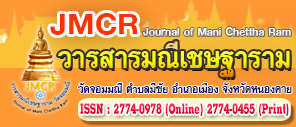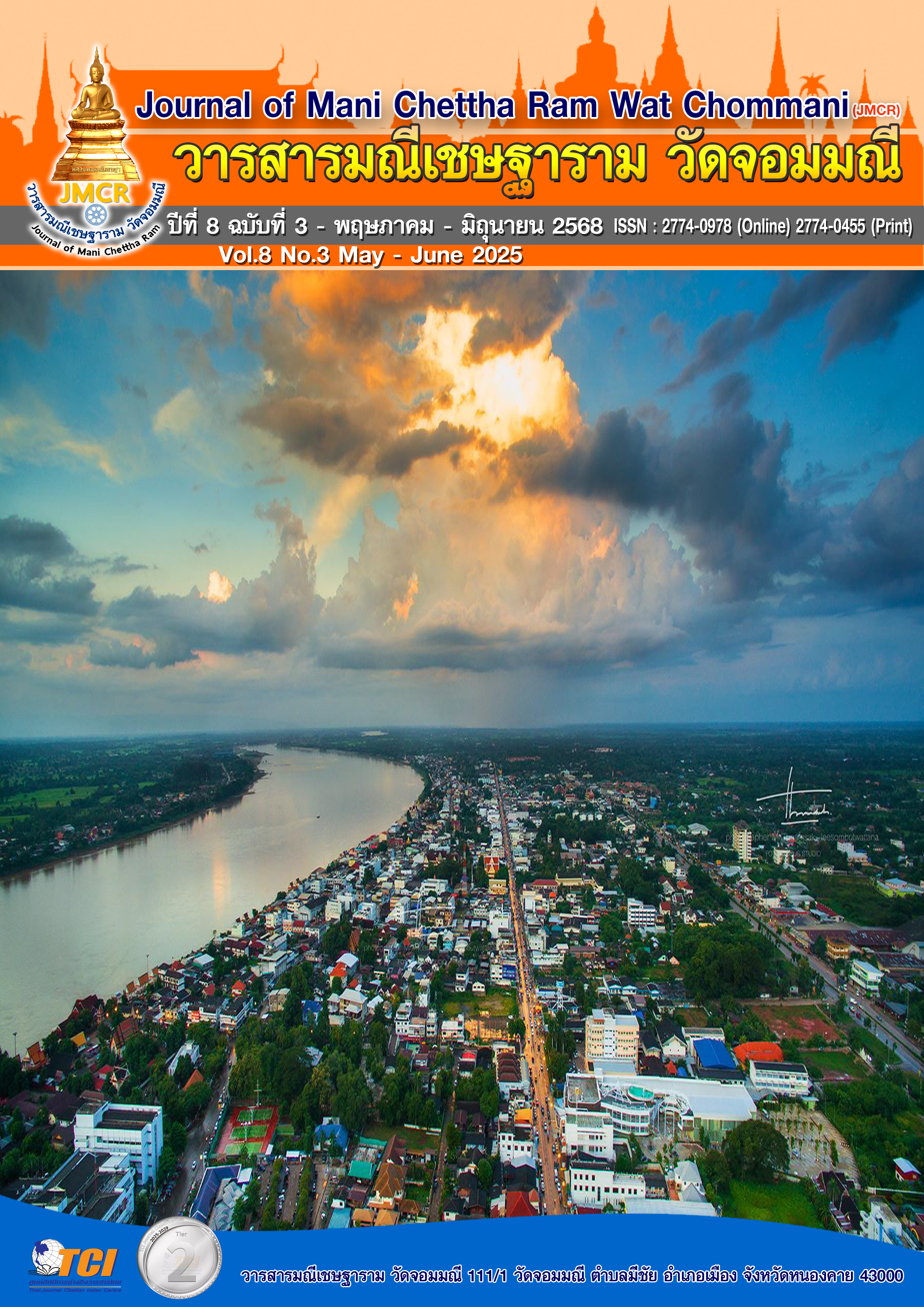NEEDS OF TEACHERS FOR INTERNAL SUPERVISION IN PRIMARY SCHOOLS UNDER OF BURIRAM PRIMARY EDUCATIONAL SERVICE AREA OFFICE 1
Keywords:
Need, Teacher Requirements, Internal SupervisionAbstract
The objectives of this research were (1) to investigate the needs of teachers regarding internal supervision in basic education schools under the Buriram Primary Educational Service Area Office 1; (2) comparing teachers’ needs for internal supervision based on their educational qualifications and teaching experience; and (3) explore guidelines for enhancing teachers’ professional development through internal supervision. The sample consisted of 330 teachers. Research instruments included a questionnaire and an interview form. The Index of Item-Objective Congruence (IOC) ranged from 0.80 to 1.00, and the reliability coefficient was 0.97. Data were analyzed using frequency, percentage, mean, standard deviation, t-test, and F-test.
The results revealed that (1) teachers' overall needs and needs in specific areas for internal supervision were at a high level; (2) significant differences at the .05 level were found in teachers’ needs when classified by educational qualifications, both overall and in specific aspects, while no significant differences were found based on teaching experience overall; however, some differences were observed in specific aspects at the .05 level; and (3) development guidelines should emphasize learner-centered approaches that foster knowledge construction through analytical thinking and practical experience. These approaches should integrate self-awareness, nature, and environmental learning to build a comprehensive understanding of global interconnections. Additionally, life and career development should focus on hands-on practice and entrepreneurial encouragement. Moral values, ethics, and democratic principles should be cultivated through participatory activities. Lastly, effective learning requires collaboration among families, schools, and communities, supported by ongoing developmental assessment.
References
แคทรียา แสงใส. (2567). สภาพและปัญหาการนิเทศภายในสถานศึกษาขั้นพื้นฐาน สังกัด สำนักงานเขตพื้นที่การศึกษาประถมศึกษาขอนแก่น เขต 2. ใน วิทยานิพนธ์มหาบัณฑิต สาขาวิชาการบริหารการศึกษา. มหาวิทยาลัยขอนแก่น.
เถลิงศักดิ์ จอกถม. (2565). ปัญหาการนิเทศภายในโรงเรียนสังกัดสำนักงานเขตพื้นที่การศึกษา ระนอง. สำนักงานเขตพื้นที่การศึกษาระนอง.
ธารทิพย์ ดำยศ. (2560). การนิเทศภายในของผู้บริหารสถานศึกษาในโรงเรียนขนาดเล็กตามการรับรู้ของครู สังกัดสำนักงานเขตพื้นที่การศึกษาประถมศึกษาสุราษฎร์ธานี เขต 3. ใน วิทยานิพนธ์มหาบัณฑิต สาขาวิชาการบริหารการศึกษา. มหาวิทยาลัยสุราษฎร์ธานี.
บุญชม ศรีสะอาด. (2560). วิจัยทางการศึกษา แนวคิดและวิธีการ (พิมพ์ครั้งที่ 10). สำนักพิมพ์มหาวิทยาลัยขอนแก่น.
พระราชบัญญัติการศึกษาแห่งชาติ (ฉบับที่ 2) พ.ศ. 2545. ราชกิจจานุเบกษา เล่ม 119 ตอนที่ 99 ก หน้า 1–9 (19 สิงหาคม 2545).
เพ็ญศรี จันทร์พาหิรกิจ. (2560). แนวคิดและแนวปฏิบัติในการนิเทศการศึกษา. กรุงเทพมหานคร: สำนักพิมพ์การศึกษาไทย.
รัฐธรรมนูญแห่งราชอาณาจักรไทย พุทธศักราช 2550. (2550). ราชกิจจานุเบกษา เล่ม 124 ตอนที่ 27 ก หน้า 1–127 (24 สิงหาคม 2550).
สำนักงานเขตพื้นที่การศึกษาประถมศึกษาบุรีรัมย์ เขต 1. (2567). ข้อมูลประชากรครูผู้สอนในสถานศึกษาขั้นพื้นฐาน ปีการศึกษา 2567. บุรีรัมย์: สำนักงานเขตพื้นที่การศึกษาประถมศึกษาบุรีรัมย์ เขต 1.
สุรพล สีขาวอ่อน. (2560). การดำเนินงานนิเทศภายในสถานศึกษาตามความคิดเห็นของบุคลากรทางการศึกษา สังกัดสำนักงานเขตพื้นที่การศึกษามหาสารคาม เขต 2. ใน วิทยานิพนธ์มหาบัณฑิต สาขาวิชาการบริหารการศึกษา.มหาวิทยาลัยมหาสารคาม.
อานนท์ โอนนอก. (2559). ปัญหาการบริหารงานวิชาการของโรงเรียนประถมศึกษา เขตกิ่งอำเภอนิคมพัฒนา สังกัดสำนักงานเขตพื้นที่การศึกษาระยอง เขต 1. ใน วิทยานิพนธ์มหาบัณฑิต สาขาวิชาการบริหารการศึกษา. มหาวิทยาลัยบูรพา.
Bandura, A. (1997). Self-efficacy: The exercise of control. W. H. Freeman.
Deci, E. L., & Ryan, R. M. (1985). Intrinsic motivation and self-determination in human behavior. Springer.
Krejcie, R. V., & Morgan, D. W. (1970). Determining sample size for research activities. Educational and Psychological Measurement, 33(1), 67.


